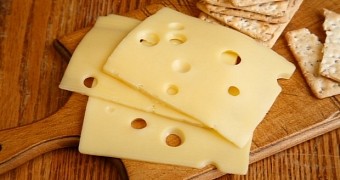A team of researchers at the Agroscope Institute for Food Sciences and the Swiss Federal Laboratories for Materials Science and Technology claim to have at long last solved a mystery that's been puzzling foodies for decades now: why Swiss cheese has holes in it.
These holes were previously said to be the work of carbon dioxide-producing bacteria in the milk used to make Swiss cheese. More precisely, it was believed that the holes were a consequence of having bubbles of carbon dioxide form in the dairy product.
Of course, there's also the explanation that the holes in Swiss cheese are made by hungry mice nibbling away at it in the dark, when nobody is watching, but this hypothesis was dismissed from the start by the research team for lack of forensic evidence to support it.
So where do the holes in Swiss cheese come from?
In a report presenting their work, the scientists detail that, to figure out where the holes in Swiss cheese come from, they turned to CT scans to closely monitor blocks of cheese over a 130-day ripening process.
They found that holes formed around teeny tiny hay particles present in the milk used to make the cheese, RT informs. The more particles the milk used to make a block of cheese contained, the more holes were present in the cheese when the ripening process was done.
Plainly put, it's impurities in the milk used to make it that explain why Swiss cheese has holes in it. Carbon dioxide-producing bacteria or sneaky mice with an appetite for delicacies have nothing to do with it.
Now for the bad news: Swiss cheese is losing its holes
In the old days, cheese makers would use buckets to collect the milk used to make Swiss cheese. Sure, they would filter it, but there was no way they could have even hoped to remove all the hay particles and other impurities from it.
These days, however, the milk is fed into special machines and comes out so clean and free of foreign particles that there simply aren't enough impurities left to form holes in Swiss cheese. Hence, the dairy is losing its distinctive looks.
In an interview, Regis Nyffeler, spokesperson for the Agroscope Institute for Food Sciences, argued that, if Swiss cheese is to keep its holes, dedicated makers should probably start adding hay particles to the milk from which it is made.

 14 DAY TRIAL //
14 DAY TRIAL // 

